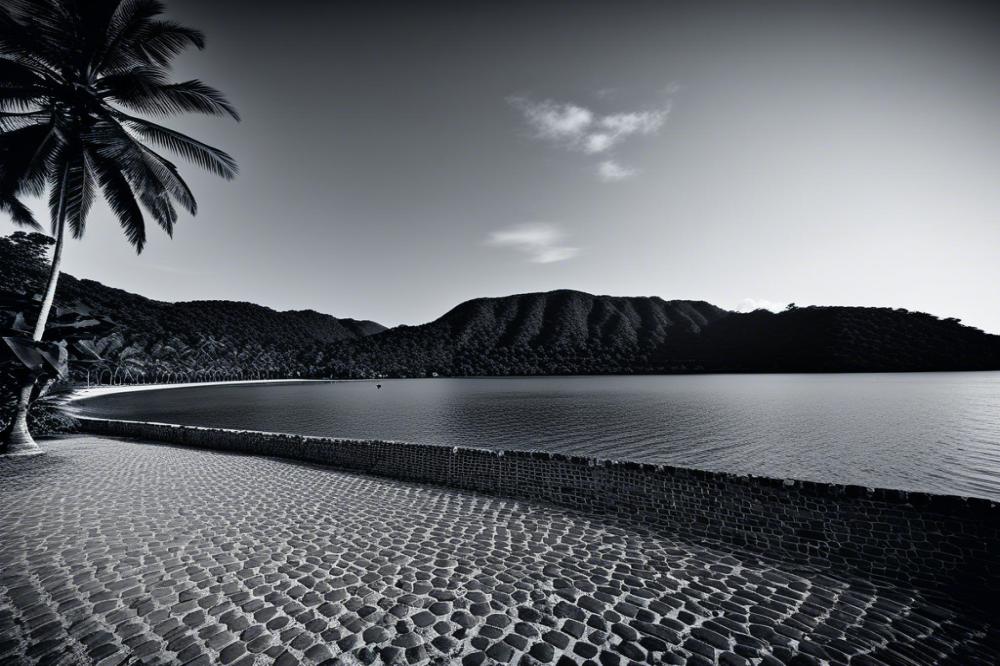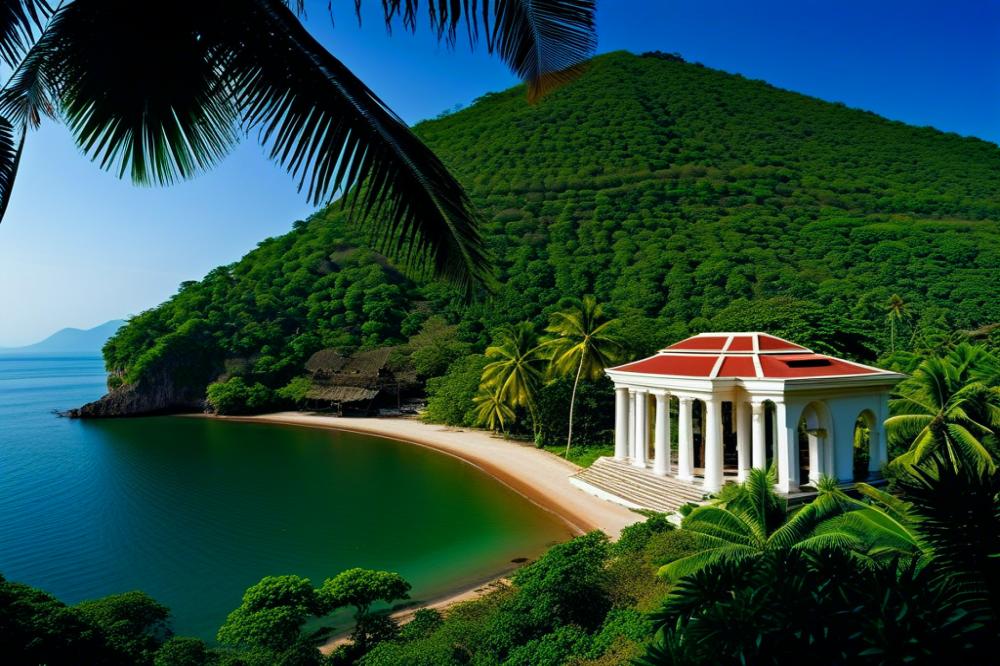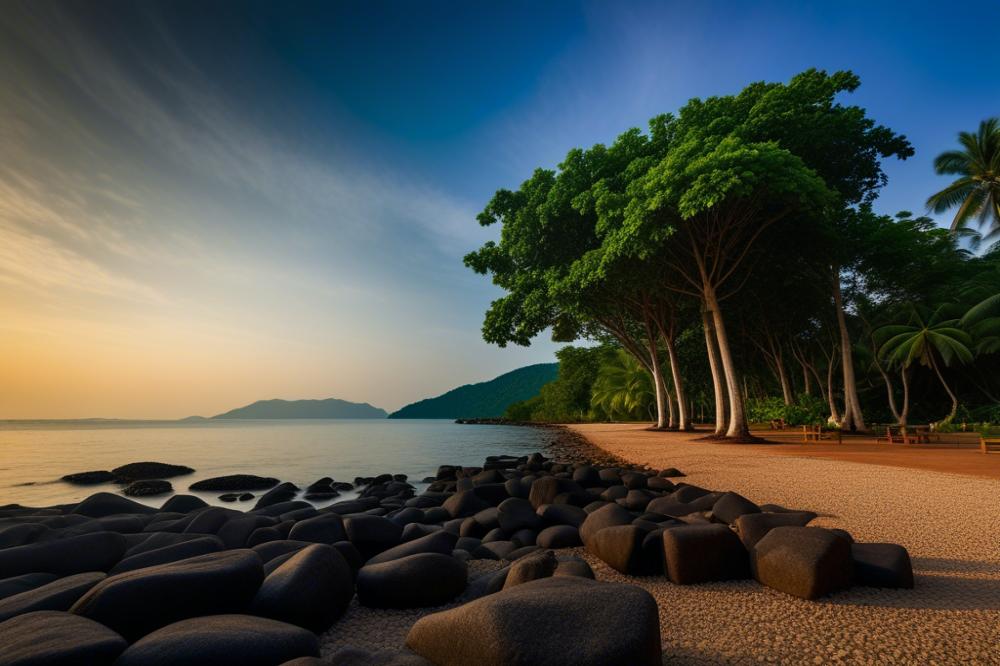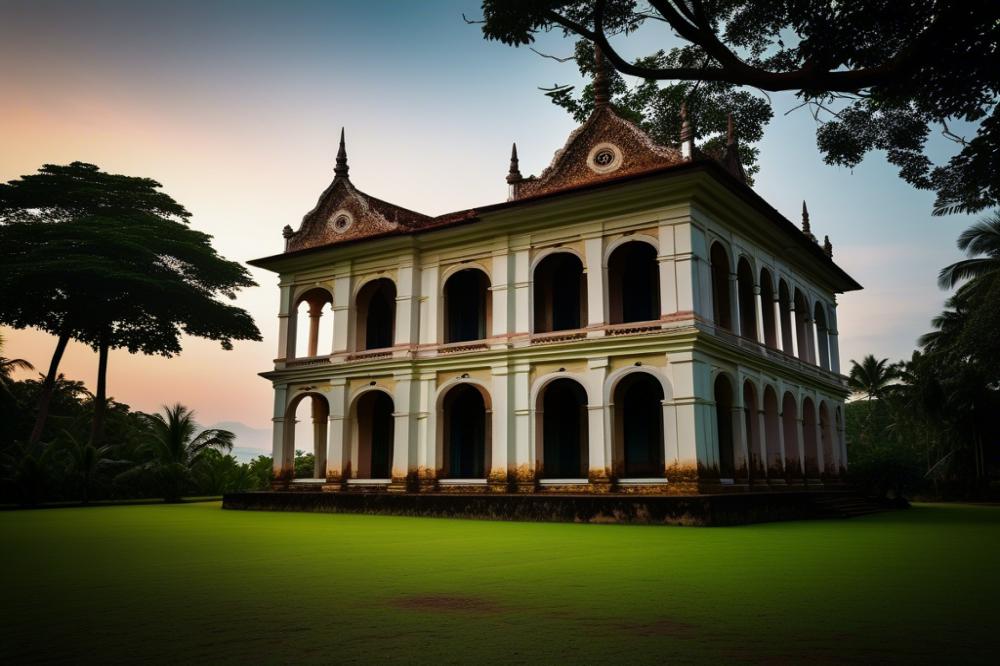Exploring the French Colonial Ruins of Kep
Cambodia is well-known for its stunning landscapes and rich history. Among the popular destinations that draw travelers is a charming seaside town known for its natural beauty, vibrant culture, and fascinating heritage. Tourists often seek out this location for relaxation and exploration. The blend of sandy beaches and lush greenery makes it an appealing spot for a getaway, far from the hustle of everyday life.
The significance of French colonial history in this region cannot be understated. During the late 19th and early 20th centuries, France established a strong presence in Cambodia, which left lasting impacts on the local culture and architecture. Today, remnants of this era can be seen in the form of ruins scattered throughout the coastline. These sites offer a glimpse into a time when French influence was at its peak, allowing visitors to appreciate both the beauty and the story of the past.
Preservation of these historical sites is important for maintaining cultural identity. Tourists play a key role in this process by visiting and learning about the area’s history. The ruins not only attract those with an interest in architecture but also those eager to connect with the local heritage. As visitors explore, they contribute to the economy while also gaining a deeper understanding of Cambodia’s journey through time. By fostering heritage tourism, both the community and its rich history can thrive together.
The Historical Context of Kep

Kep’s development began during the French colonial period in the late 19th century. The French sought to establish a seaside resort, attracting both locals and foreigners. This led to the construction of various structures that exemplified French architecture. Villas and hotels sprang up along the coast, reflecting the style of that era.
Several key events significantly shaped the architecture and culture of this coastal town. The establishment of the King Norodom Sihanouk’s villa in the 1960s marked an important moment. His royal presence encouraged tourism and inspired further development in the area. Cultural exchanges with the French enhanced the local lifestyle, blending traditions and creating a unique atmosphere.
With these historical changes, the identity of this town evolved. After the Khmer Rouge regime, many buildings fell into disrepair. The ruins became symbols of a complex history, representing loss and resilience. Today, they stand as a reminder of the past and draw visitors eager for exploration. Interest in preserving these sites has grown, highlighting their value to Cambodia’s heritage.
Tourism thrives on the remnants of the past. Many travelers come to admire the blend of nature and deteriorating structures. The seaside views enhance the experience, making it a favorite spot for photographers and history enthusiasts alike. Each visit allows tourists to connect with the layered culture and appreciate the significance of its ruins.
Architectural Highlights of the Ruins

The French Colonial Ruins in Cambodia offer a glimpse into a rich chapter of history. Several notable structures dot the landscape, each telling its own story. The old villas showcase distinct architectural styles, combining traditional Khmer elements with colonial design. These buildings often feature large verandas, high ceilings, and elegant arches, which provide a feel of luxury from a bygone era.
One prominent example is the former casino, built to attract tourists to the seaside. Its facade displays an intricate blend of French and Asian designs, creating a striking visual impact. Additionally, remnants of the railway station still stand, with its robust columns anchoring the site in the context of importance for transportation at the time. Forms of architecture like this captured the ambitions of a colonial power and its impact on local culture.
Examining these structures reveals various influences that shaped their designs. The use of brick and concrete reflects European construction methods, while decorative motifs often stem from local inspiration. This integration illustrates how different cultures can blend, resulting in a unique architectural language. Exploring these ruins offers insights not just into the buildings themselves, but also into the diverse heritage of the region.
Preservation efforts play a crucial role in maintaining these historical buildings. Organizations and local communities work together to restore and protect what remains of this architectural history. Tourism relies heavily on the allure of these ruins. Without continued support, the fabric of this heritage could easily deteriorate. Efforts to safeguard such sites allow future generations to appreciate the complexity of Cambodia’s past and the stories embedded within each structure.
Visitors often find these ruins to be more than just stones and walls. They evoke a sense of nostalgia, reflecting the intricate tapestry of Cambodia’s culture. The exploration of these remnants creates an opportunity to learn about a period that significantly influenced the nation’s development. By valuing and preserving these buildings, society can celebrate its history while fostering appreciation for the architectural legacy left behind.
The Seaside Charm of Kep

The relationship between the colonial ruins and the seaside environment is striking. Here, remnants of French architecture stand as a testament to the area’s history. These ruins offer a glimpse into a rich past while overlooking the tranquil waters of the Gulf of Thailand. Visitors can wander through crumbling structures, imagining a vibrant past where these buildings thrived amid colonial life.
Exploration of Kep’s Beaches and Their Cultural Significance
Beaches near the ruins provide more than just scenic beauty. They hold cultural significance for locals and tourists alike. Families often gather on these sandy shores, creating memories that connect past generations with the present. Through events, such as beach festivals, the community showcases the local traditions and crafts, emphasizing the harmony between culture and nature.
Activities for Tourists That Blend History and Coastal Relaxation
Tourism thrives in this unique region where history and leisure merge. Walking tours allow tourists to delve into the stories behind the ruins while enjoying sea breezes. Beachside cafes serve fresh seafood, inviting visitors to taste local cuisine while soaking in the ocean views. Kayaking presents an exciting way to explore the coastline, offering perspectives of the ruins against the backdrop of waves.
Many opt for picnics on the beach, blending relaxation with the rich heritage nearby. These activities foster a special atmosphere, where people can unwind and appreciate the beauty of both nature and history. Engaging with the seaside environment allows travelers to appreciate the depth of this remarkable location.
Cultural Exploration and Heritage Tourism

Local traditions in Cambodia reflect influences from colonial history. The architecture of the French era can be seen in structures along the coastline. Visitors often notice elements that date back to a time when European styles mingled with Khmer designs. This blend gives the area a distinctive look and feel.
Exploration of the ruins offers various experiences for travelers. Walking through these remnants, tourists can imagine life during the colonial period. Photographers find joy in capturing the contrasts between nature and old buildings. Guided tours often provide insights into the past, enriching the experience.
Cultural events frequent the region, allowing visitors to engage with local customs. Traditional music and dance performances highlight the area’s rich heritage. Festivals celebrate local fruits and seafood, drawing on deep-rooted practices that bring communities together.
Preservation of these sites plays an essential role in promoting sustainable tourism. By maintaining historical architecture, local authorities can protect both history and the environment. When visitors appreciate the cultural significance of the ruins, it encourages respect and care for these locations. Sustainable tourism thrives when heritage is valued and respected, benefiting both locals and tourists alike.
Every trip to these ruins can be an opportunity to understand a complex history. Travelers who engage with the local culture contribute to its ongoing narrative. A deep appreciation for this seaside town’s past will inspire a desire for its future preservation.
Preservation Efforts and Future Challenges
Current initiatives in Cambodia focus on protecting and restoring the colonial ruins along the seaside. Various organizations work tirelessly with local authorities to safeguard this heritage. Renovation projects aim to maintain the architectural integrity of the structures. They often include surveys to assess damage and plan repairs. Efforts also involve raising awareness among tourists about the historical significance of these sites. Guided tours now educate visitors about the area’s rich culture and history.
Challenges arise in preserving the ruins, particularly due to climate factors and urban development. Natural erosion poses a serious threat to coastal structures. Moreover, many sites suffer from neglect and insufficient funding. Additional issues include the impact of litter and vandalism from both locals and travelers. Balancing tourism growth with preservation is crucial for future sustainability. The delicate nature of these ruins requires constant vigilance and care.
Community involvement plays a significant role in heritage preservation. The local population often possesses valuable knowledge about their history and culture. Workshops and educational programs can foster a sense of ownership among residents. By engaging community members, preservation efforts become more effective and meaningful. Volunteering for cleanup events or restoration projects creates a stronger connection to the sites. Together, these actions promote a deeper appreciation for the historical landscape.
Reflecting on the Colonial Heritage of Kep
Kep’s colonial past reveals a fascinating chapter of Cambodia’s history. The remnants of old French architecture dot the coastline, reminding visitors of a different era. These structures serve as a backdrop for exploring the blend of cultures that exist in this region. Understanding this heritage is essential for tourism. Tourists are drawn not only to the beautiful beaches but also to the rich stories these ruins tell.
Cultural exploration in this charming area offers a deeper experience for visitors. Engaging with locals can provide insights into the lifestyle that has evolved from colonial times. Food tours featuring traditional dishes reflect this unique mix of cultures. Programs that focus on history can help tourists appreciate the significance of the sites they visit. Each interaction adds a personal touch to the journey, enriching the overall experience.
Preserving history is crucial for future generations. Efforts must be made to maintain these colonial ruins. They are more than just buildings; they represent the struggles and triumphs of a community. Educating younger generations about this heritage fosters respect and appreciation for the past. In doing so, society can ensure that the stories of those who came before are not lost.
In summary, the colonial legacy of this coastal town is an attractive aspect of its tourism. The opportunity for cultural exploration enhances the visitor experience significantly. Recognizing the importance of preserving these sites will help keep history alive for years to come.



